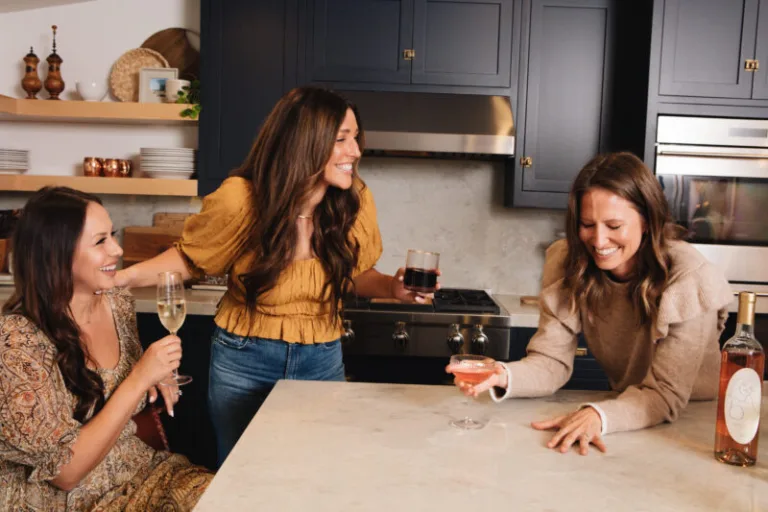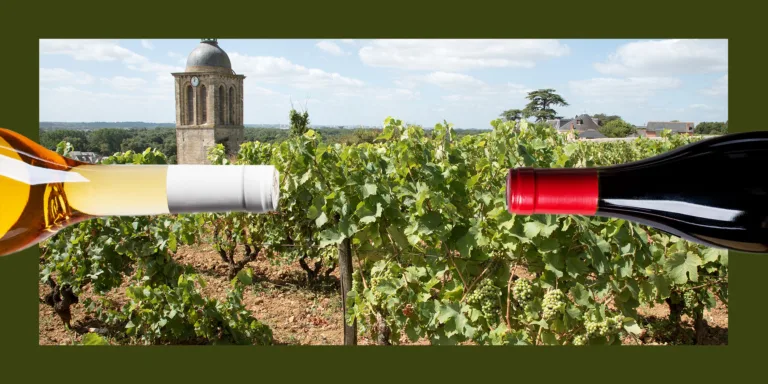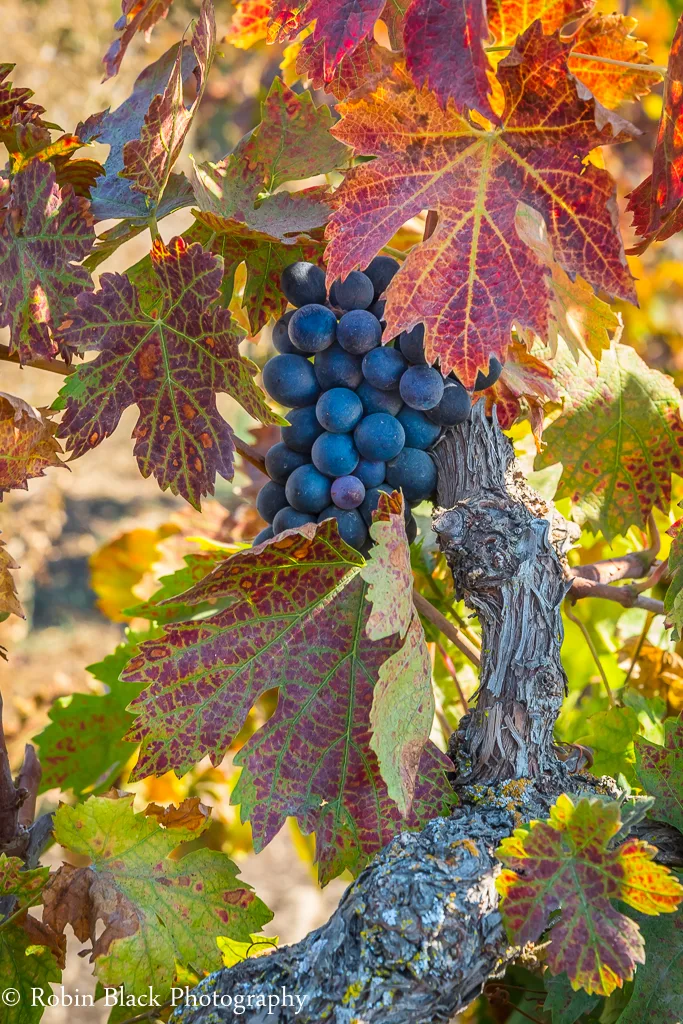Virginia ranks among the hottest wine regions in the United States. The state was among the first wine regions in the country, but is now starting to gain the same respect as the nation’s top regions — both from drinkers and drinks media.
But, what makes Virginia wine… Virginia wine? At this point, it’s impossible to separate Napa from Cab, or likewise Oregon and Pinot, and Finger Lakes and Riesling. What is Virginia’s wine style?
Virginia has been largely considered an experimental, emerging wine region for a long time. In fact, some could say Virginia has been experimenting since Thomas Jefferson began planting European varieties in the state in the late 1700s after an excursion through France.
But now, Virginia is starting to take a more measured approach to understanding what will work in the state. In the vineyard, winemakers are using grapes from moderate regions in countries like France and Spain, in hopes that the similarities between climates create similarly optimal wines. In the winery, the state is establishing more custom-crush/incubator-style programs to accelerate experimentation for the winemakers. Industry organizations hope these learnings might create a path toward a signature style, allowing them to better market Virginia wines outside the state.
But even if a variety emerges as the best option for Virginia wine, will winemakers stop their experiments and get on board?
Signature Virginia Varieties
Virginia did declare a signature variety once. In May 2011, The Virginia Wine Board decided to “pursue a marketing plan that will include the designation of Viognier as Virginia’s signature grape for national branding purposes.” Unfortunately, this turned out to be a hasty decision, as wine growers struggled with inconsistent vintages and a finicky grape. Ultimately, the variety lost favor, with winemakers planting other grapes that work better in the region.
Most winemakers are not yet ready to declare a grape to be the signature for the state. There are nearly a dozen varieties held in high regard. Many winemakers cite Cabernet Franc, Petit Verdot, and Petit Manseng, along with Viognier, as some of the top grapes in the state. Chardonnay, Cabernet Sauvignon, and even Tannat are also popular. And some are experimenting with Spanish varieties like Albariño and Grenache.
Virginia also considers native and hybrid grapes as well, such as Seyval Blanc, Vidal Blanc, Norton, and Chambourcin.
However, part of the challenge of choosing a signature is how Virginia is perceived versus other wine regions.
“It’s a big state,” says Ben Jordan, former head winemaker at Early Mountain Vineyards. “Napa is Cab, Willamette is Pinot, but Virginia is a much bigger state so the challenge is we consider it a ‘region’ like Napa. It is just too diverse.” Jordan is now the founder of Commonwealth Crush, an incubator focused on innovative ways to make wine in the state. He is also a board member of the Winemakers Research Exchange (WRE), one of its earliest members.
“We have mountains, we have oceans and everything in between,” says Joy Ting, the research enologist of WRE who echoes Jordan’s sentiments. ”When we look at the things we know affect which varieties grow well, what kinds of viticultural techniques we need, and how we express those styles in the winery, we need to remember that.”
Virginia as a state is about 23 million acres. According to the Virginia Department of Agriculture, about one-third of that land, about 8 million acres, is being used for farming. Looking at Virginia relative to the Willamette Valley, which is about 44,000 acres, would be comparing apples to oranges. Oregon is a more accurate comparison. Though the state is about three times the size of Virginia (67 million acres, 16 million acres farmed), Virginia is 500 times larger than the Willamette Valley.
With all that land to consider, winemakers believe it’s the diversity that makes the state interesting. Virginia does not export heavily right now, so some don’t feel the need to simplify for “national branding purposes,” as the Virginia Wine Board suggested. Perhaps that will become more important as the state continues to gain recognition, but it doesn’t seem to be the case right now.
However, if the state were to chart a path to finding its identity, there are lots of ways to do it.
The Criteria for Choosing a Signature Wine
The WRE’s stated goal is to “pursue quality improvement through practical experimentation in vineyards and wineries.” Or, as Ting puts it, “our job is to get good data.”
WRE conducts several experiments per year, focused on fruit, fermentations, and phenolics. Those experiments are shared in sensory sessions among 30 Virginia winemakers and its YouTube channel. Data from these experiments analyzes different elements — soil conductivity, oak usage, sulfur management, acid adjustments, etc. — and how they impact the quality of the wine.
Ting acknowledges that if the focus is on quality, the best way to go about things is to find the selection of grapes that work best in the state and figure out how to turn those grapes into better wine.
According to the 2022 Virginia Commercial Grape Report, an annual report that reviews what’s growing throughout the state, Cabernet Franc, Chardonnay, and Petit Verdot make up nearly 40 percent of both the acreage under vine and tons of fruit. While there are more than 11 varieties with significant plantings (more than 100 acres planted), winemakers seem to be focusing on just a handful of grapes.
If Virginia is going to consider a signature wine from that list, Ting has a few criteria to help.
“One: We make a consistently top-quality version of it; two: We have a distinctive voice for that grape; and three: It’s a product that meets international standards, and Virginia has a specific perspective on it,” she says.
Everyone Has a Role to Play
Deciding Virginia’s signature style, or even if there should be one, is a complicated question. Napa Valley, the Willamette Valley, and other regions like it, benefit from having signature wines. Consumers know what they’re going to get when they visit, and many are willing to spend a little more to get these wines. Meanwhile, winemakers know exactly what to make, and how to make it.
There are limitations to this approach, though. For winemakers working in Napa Valley, the options are either growing Cabernet Sauvignon, or staking their business on a less popular variety, even if other grapes grow just as well in the region. Ultimately, that means there’s less room for exploration, which is something Virginia winemakers hold dearly.
Kirsty Harmon is the head winemaker and general manager of Blenheim Vineyards in Charlottesville. She produces some of Virginia’s staples, like Viognier and Petit Verdot. But she also has acres planted to Grüner Veltliner, Albariño, Grenache, and recently started planting Mencía due to climate similarities between Virginia and Spain. She’s even sourcing Rkatsiteli, a staple in the ancient wines of Georgia (the country), from Horton Vineyards about 30 miles away.
She notes that experimentation is key to her work as a winemaker. “I think that constant questioning of how I do things in the cellar, and what we are doing in the vineyard is the best way to keep moving towards making better wine,” Harmon says. Her goal, ultimately, is to get to a point where the next winemaker has much less exploring to do.
“The winemaker after me will probably pull up half the vineyard and I encourage that,” she says. “Because hopefully in my time here we would’ve learned something, we would’ve figured some things out.”
Tracey Love, the marketing, events, and sales director of Blenheim is more focused on showing people Virginia wine than telling them what to buy. She believes the state will “gain more recognition by hosting larger and more inclusive Virginia wine events, raising awareness of the wines.”
Love helped start an initiative called Oenoverse, led by Virginia’s “hype man” Reggie Leonard. The organization started as a wine club but now hosts events every month. The events are primarily educational wine tastings and help to spread the word about all the different things the state is doing in wine.
Winemakers, marketers, and consumers all have a role to play in finding Virginia’s signature. However, at least within the state, they could also decide to keep experimenting together.
The Future of Virginia Wine
Virginia has a tough decision to make. Stay a scrappy, diverse, exploratory region that is unique but difficult to market. Or, brand the state like it did in 2011, and use that to become more clear to drinkers in other parts of the country (and the world), but lose some of its flexibility along the way.
The state does not seem ready to give up its emerging, scrappy nature. Winemakers like Jordan and Harmon embrace the ability to plant different varieties, source fruit from all over, and see what makes the most sense.
Organizations like the Virginia Wine Board could help consumers recognize that diversity, rather than combining the state into one wine region. There are grapes that work great in the Middleburg AVA of Northern Virginia, different grapes for Monticello, and different styles and grapes in the Shenandoah Valley. The resulting wines are equally different.
However, these groups clearly want to put Virginia on the map and have made attempts to produce a statewide calling card to share with the country.
Perhaps winemakers are on a path to finding Virginia’s signature style and aren’t aware of it yet. As the winemakers and groups like Commonwealth Crush and WRE learn more about what works, that could start to narrow the focus on a smaller group of grapes and styles.
If Virginia wants to become an established, top-tier state for wine, it will need to find the right balance between diversity, clarity, and quality. Find what grows best, what makes wines unique and exciting, and make sure consumers know where to go.
The article Is This the Path to Establish Virginia’s Signature Wine? appeared first on VinePair.




